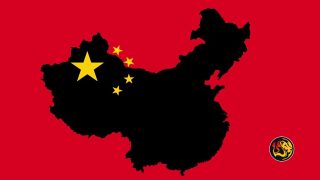China’s Drone Swarm Surge Sparks U.S. ‘Hellscape’ Defense Strategy Amid Taiwan Invasion Fears (Investigation)

by Emmitt Barry, Worthy News Correspondent
(Worthy News) – China’s PLA is advancing drone swarm warfare for strikes and surveillance, outpacing manned-unmanned integration, a U.S. Air Force report says. As tensions rise in the Taiwan Strait, Admiral Paparo warns China’s buildup is a “rehearsal” for invasion. In response, the U.S. plans a “hellscape” of drones, while Taiwan boosts its drone production and arms purchases.
The People’s Liberation Army is advancing its use of drone swarms for both precision strikes and battlefield intelligence, according to a report from a U.S. Air Force think tank.
China’s People’s Liberation Army (PLA) is rapidly advancing in drone swarm warfare, outpacing its development of manned-unmanned teaming (MUM-T), according to recent defense assessments. Swarm tactics—leveraging large numbers of coordinated UAVs—are more mature and closer to real-world deployment, especially for reconnaissance and precision strikes.
The PLA has already tested swarm operations in military exercises, drawing on lessons from global conflicts in Ukraine, Syria, and Israel. Analysts highlight the tactical advantages of using a swarm, including stealth, speed, and overwhelming force.
Meanwhile, MUM-T—a concept integrating drones with manned aircraft, ships, and ground systems—remains largely experimental. Although China’s defense industry has produced several AI-enhanced prototypes, few have entered service. The “loyal wingman” drone concept, for example, is still in the prototype phase according to the report.
A key concept highlighted in the report is the “mothership” model, used in both swarm and MUM-T strategies, where larger manned or unmanned platforms act as launch hubs for smaller drones, significantly extending operational range and flexibility.
Despite its potential for low-intensity missions like border patrol or psychological operations, MUM-T is still in early testing. Most current applications are limited to non-lethal functions such as surveillance and targeting, with full combat autonomy still facing internal resistance.
While the PLA is beginning to incorporate drones into existing force structures, how these technologies will be integrated into broader joint or multi-domain operations remains unclear. For now, swarm capabilities are leading the way in China’s evolving drone warfare strategy.
Admiral Samuel Paparo, head of U.S. Indo-Pacific Command, told the Senate Armed Services Committee last week that China’s intensified military activity near Taiwan appears to be a “rehearsal” for invasion, warning that “military pressure against Taiwan [has] increased by 300 percent” in 2024 alone.
“China’s increasingly aggressive actions near Taiwan are not just exercises, they are rehearsals,” Paparo testified, citing “unprecedented aggression and military modernization.”
Earlier this month, China conducted large-scale drills around Taiwan involving naval, air, ground, and rocket forces, including an aircraft carrier group. The PLA’s Eastern Theater Command said the exercises were a “severe warning and forceful containment against Taiwan independence.”
Paparo revealed a defense strategy to deploy “thousands” of low-cost aerial and underwater drones to delay a potential Chinese assault, calling it a “hellscape” strategy designed to buy time until U.S. forces can reinforce the region.
In response, Taiwan is accelerating efforts to build self-sufficient drone supply chains and boost U.S. arms orders to counter China’s military advantage, a defense official told the Taipei Times.
The official, speaking anonymously, said Taiwan’s forces share U.S. Admiral Samuel Paparo’s view that the island must be ready to turn its waters into a “hellscape” for China’s People’s Liberation Army.
If you are interested in articles produced by Worthy News, please check out our FREE sydication service available to churches or online Christian ministries. To find out more, visit Worthy Plugins.
